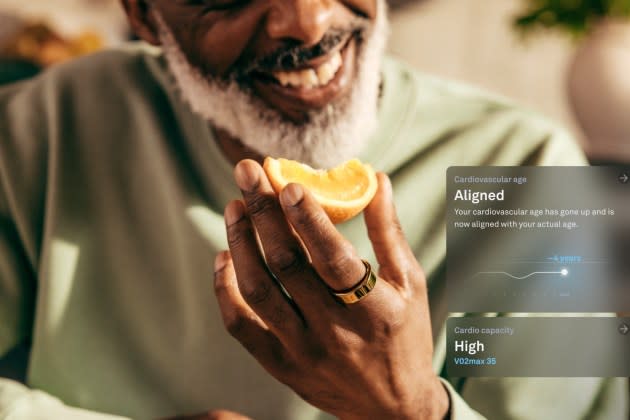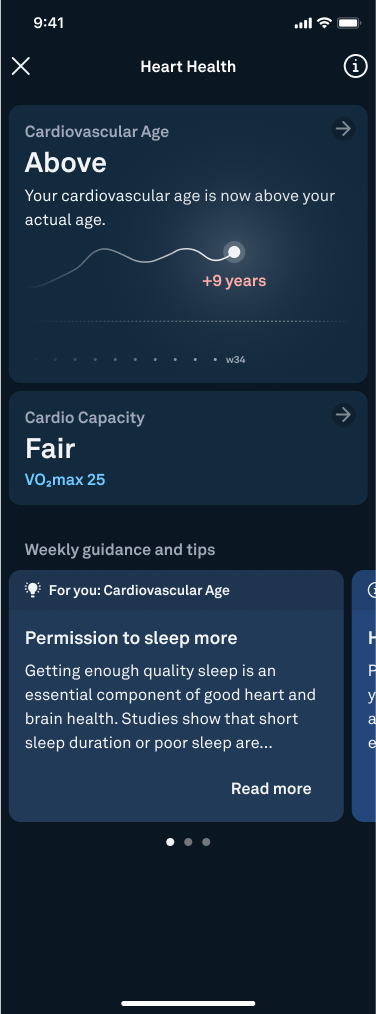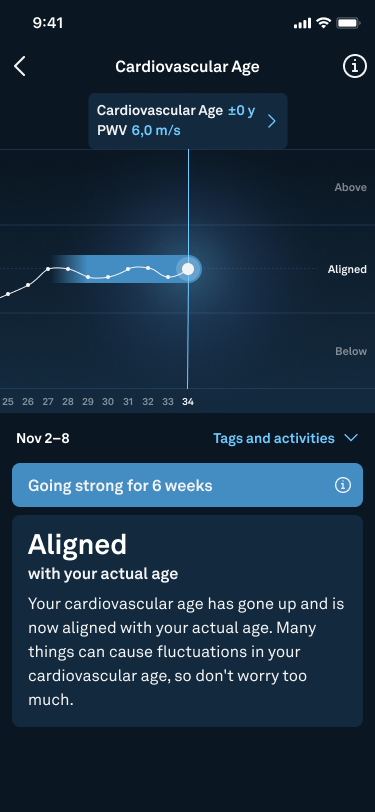Oura Is Betting Big on Heart Health With Two New Cardiovascular Tracking Features

Oura is doubling down on heart health with two new cardiovascular tracking features.
Later this month, the health tech company will roll out Cardiovascular Age and Cardio Capacity to its ring users.
More from WWD
EXCLUSIVE: HigherDose Launches Red Light Hat to Expand Consumer Reach
EXCLUSIVE: Shake-up at Stitch Fix, With Top Merchandising Exec to Depart
Adore Me's New AI Tool Lets Shoppers Design Their Own Bra and Panty Set
“Cardiovascular Age is intended to give you a window into the health of your vascular system, so through this idea of arterial stiffness, whereas Cardio Capacity is a complementary metric that gives you a window into cardiorespiratory fitness, how you’re able to absorb, transport and consume oxygen when you’re engaged in physical activity,” said Shyamal Patel, Oura’s head of science.

The company has been eyeing heart health for several years, conducting clinicals to roll out these features, as the team says it’s a key pillar of health and overall longevity, similar to sleep.
“Heart health is something that affects, directly or indirectly, every one of us,” Patel said. “It’s also something that is connected with not just the heart, but it’s a central organ that supplies blood to all of our other organs.”

With Cardiovascular Age, the company is employing a wearer’s photoplethysmograph (PPG) signal, which provides estimated arterial stiffness and pulse wave velocity (PWV), to dictate how their vascular system is aging.
“We’re measuring your pulse wave velocity… which is essentially how fast the blood is traveling to your arteries… and mapping that in terms of the number of years as the age of your vascular system and how does that compare with your chronological age,” Patel said.
After 14 days of consistent use, an Oura user will see their Cardiovascular Age and whether it is above, below or aligned with their chronological age.
Cardio Capacity employs VO2 Max, measured through a user’s six-minute baseline walking assessment.
“We will track the distance that you travel along with a bunch of other metrics and using that information, we will estimate your VO2 Max and then interpret that estimation in terms of where you are: is it high, low or aligned with your age level?” Patel said.
Many of the metrics used in Oura’s heart health-tracking features are new to the wearable world, as they have previously required a lab. However, by using an array of variables, the ring is effectively able to estimate these metrics, according to Oura.
“Vascular aging [and] arterial stiffness, these have been concepts that have been essentially trapped in the clinical world because they haven’t been very accessible,” Patel said. “We are effectively translating those measurements and enabling an Oura member to make that measurement continuously.”
With these two features, users will also be able to view an array of insights on what might be contributing factors and what habits they could change.
“When we present a metric, we also want to make sure that we’re giving you an insight,” Patel said. “As we do with all of our features, we provide insights about… what are the factors that have an impact on your cardiovascular age and what can you can do to change or improve this this metric.”
Patel said this will continue to evolve over time, as the company conducts additional studies.
“That’s where we see evolution of our heart health features,” he said. “We want to be able to provide you guidance in terms of what you could do and how actions you could take could change the trajectory, so not just, ‘This is where you are,’ but, ‘If you do this, this is where we think you could get to.'”
These insights will also be helpful in predicting what could be beneficial for a user in the long term.
“We wanted to zoom in into providing a window into your heart health today, but also your heart health in the future and connect the things that you’re doing on a day-to-day basis… with this idea of health span and longevity,” Patel said.
When it comes to heart health, this isn’t the end for Oura.
“We have a series of features that we’re working on that will complement these to give you a more holistic view into your heart health,” Patel said.

